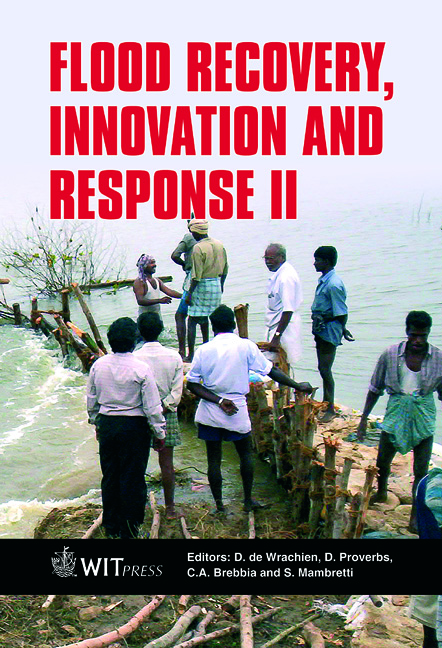Assessment Of Damages Caused By Different Flood Types
Price
Free (open access)
Transaction
Volume
133
Pages
9
Page Range
3 - 11
Published
2010
Size
3,055 kb
Paper DOI
10.2495/FRIAR100011
Copyright
WIT Press
Author(s)
H. Kreibich & B. Dimitrova
Abstract
Comprehensive risk assessments are essential to integrated, efficient flood management. However, investigations concentrate mainly on scenarios of slowly rising riverine floods and their loss assessment. The common loss models are focused on the water level as the primary factor determining damage, although, for example during flash floods, the velocity might be much more important. To improve the knowledge about flood losses and the loss-influencing factors, 1697 households affected by the Elbe and Danube flood in 2002 were interviewed. Cases affected by high groundwater levels, riverine floods, flash floods and dyke breaches were identified and separately analyzed. The four flood types show significantly different impact characteristics concerning the factors of water level, flood duration, flow velocity and contamination. In addition, the resulting losses differ significantly. Common loss models tested, i.e. stage-damage curves, were as such not suitable to estimate losses due to dyke breaches and high groundwater levels. Therefore, new loss models should be developed for these special flood situations. Keywords: flash floods, flood loss, high groundwater levels, dyke breaches, riverine floods, impact, stage-damage curve. 1 Introduction Comprehensive assessments that quantify the flood risk are essential for an efficient flood management [1–3]. Such analyses require the estimation of flood losses. A central idea in flood loss estimation is the concept of stage-damage curves, which have in common that direct monetary losses are mainly related to
Keywords
flash floods, flood loss, high groundwater levels, dyke breaches, riverine floods, impact, stage-damage curve





